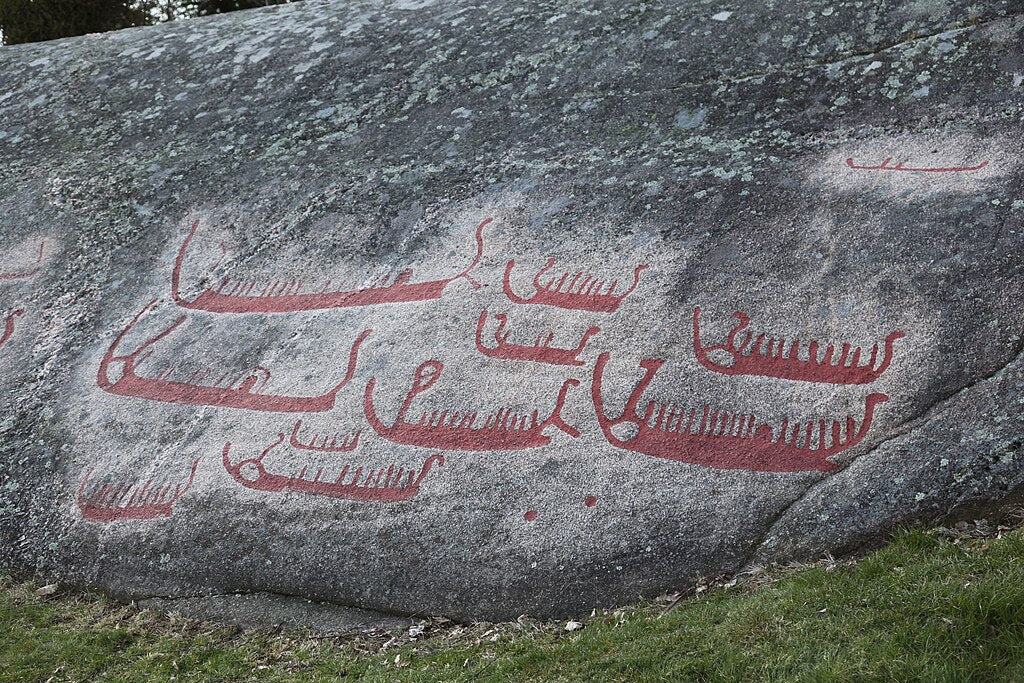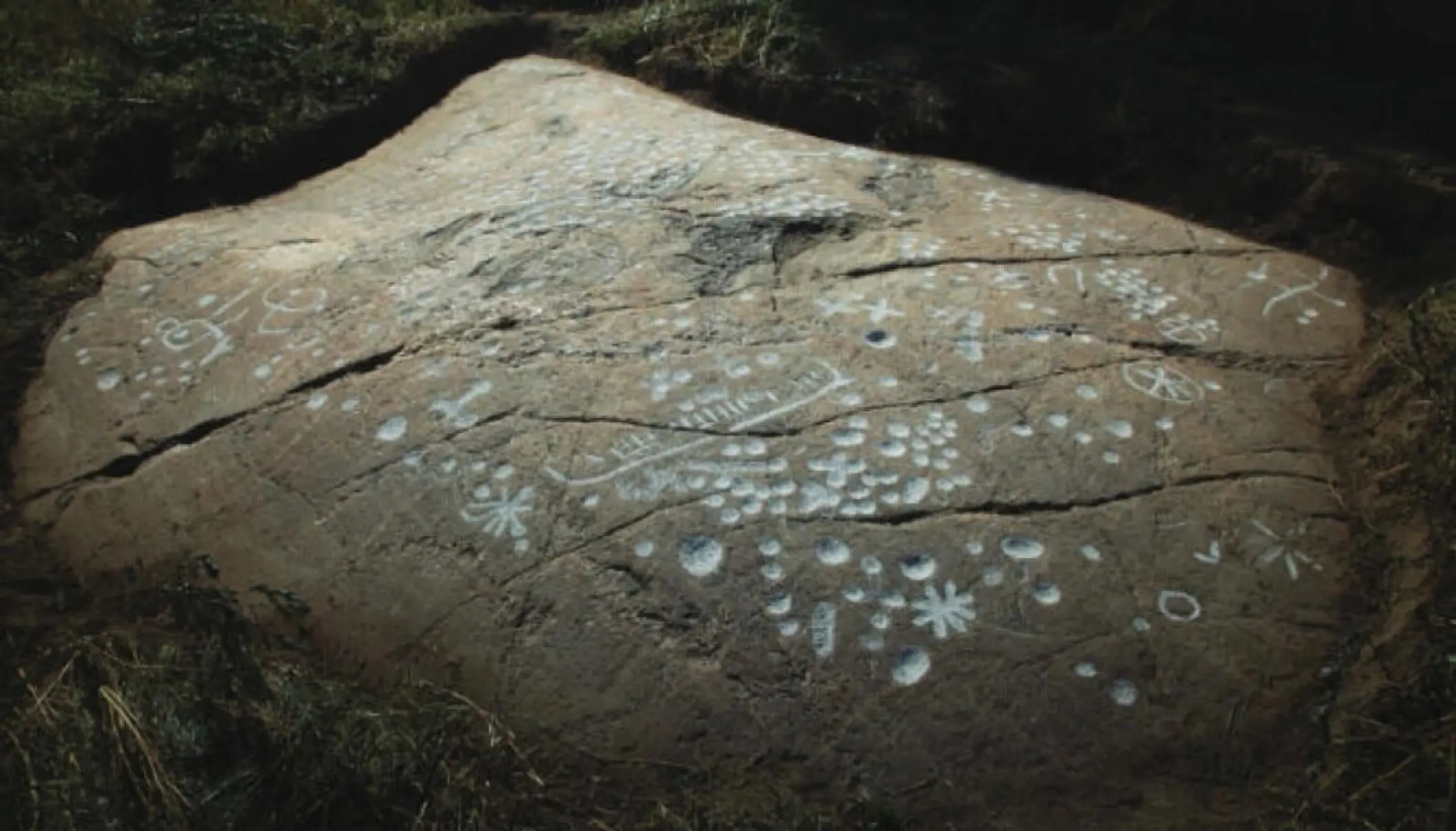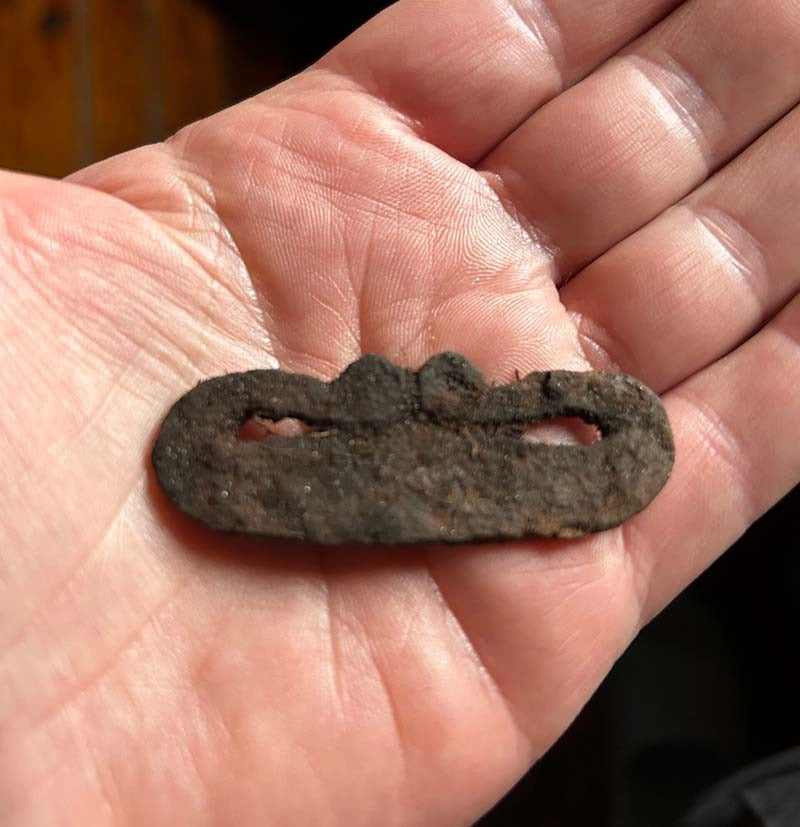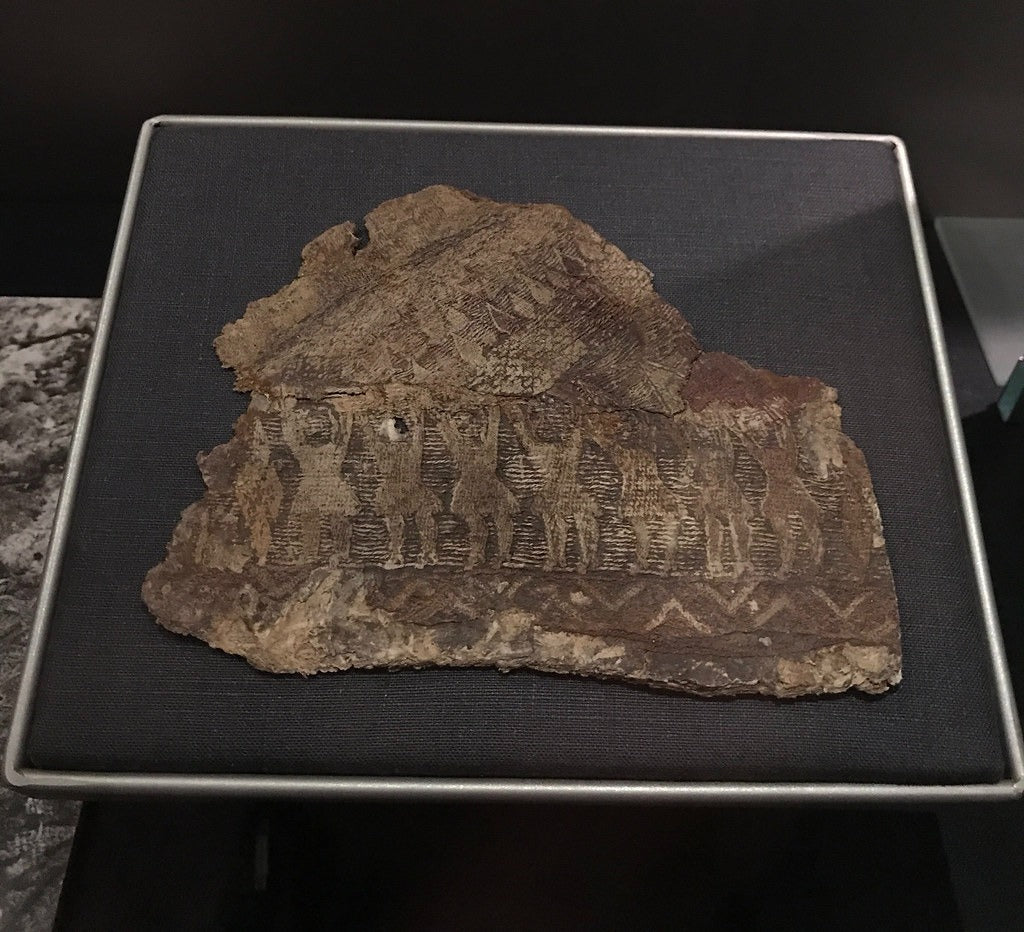
Amateur Archaeologists Uncover Hundreds of Ancient Rock Carvings in Norway
In a remarkable display of citizen science and archaeological enthusiasm, three friends from Norway's Østfold region have revolutionized the hunt for ancient rock art, uncovering nearly 600 new petroglyph sites in their spare time. This groundbreaking work has more than doubled the number of known rock carving locations in the area, potentially reshaping our understanding of Bronze Age Norway.
The Torch-Bearing Trio
Lars Ole Klavestad, Magnus Tangen, and Tormod Fjeld form an unlikely team of amateur archaeologists. Klavestad, a landscape architect and artist, Tangen, a professional archaeologist, and Fjeld, a graphic designer, have combined their diverse skills and shared passion for history to make significant contributions to Norway's archaeological record.

Torches illuminate the way for petroglyph hunters in Norway’s Østfold region, leading to exciting discoveries this autumn. This image captures a notable find made on October 15 2022. (Photo: Fjeld / Klavestad / Tangen)
"We go out in the dark about one day a week," Klavestad explains. "It's all about using light in the right way. And over time, the experience we've gained has helped too."
Their method is both simple and ingenious. Armed with torches and a deep understanding of the local landscape, the trio ventures out after dark, using oblique lighting to reveal shallow carvings that are nearly invisible in daylight.
A Sea Change in Rock Art Discovery
The group's approach to locating new sites is rooted in a keen understanding of ancient geography. They began by considering the sea level during the Bronze Age, approximately 3000 years ago, when the ocean stood about 15 meters higher in Østfold than it does today.
By analyzing maps and following contour lines in the landscape, they identify areas that would have been coastlines or inland waterways millennia ago. This strategy has proven remarkably effective, as we now know that much of Norway's ancient rock art was created by people who lived close to water.
"It's a pretty big thrill when we find something exactly where our analysis indicated that it could be," the team reports.
From 'Farming Carvings' to Maritime Mysteries
The discoveries made by Klavestad, Tangen, and Fjeld are challenging long-held assumptions about Norwegian rock art. For years, these petroglyphs were referred to as "farming carvings" due to their presence in what is now agricultural land. However, this term has proven to be a misnomer.

The figures discovered in Fredrikstad on October 15 2022 are illuminated by oblique light and shadows, highlighting their shallow carvings. The scenes depict ships with two figures aboard. (Photo: Fjeld / Klavestad / Tangen)
Recent findings suggest that as many as 90% of all rock carvings in Norway are linked to the sea, fjords, and lakes. The prevalence of ship and boat imagery in these petroglyphs further underscores their maritime connections.
This shift in understanding raises intriguing questions about the symbolic nature of these carvings. While many depictions may represent real vessels, the discovery of ship imagery in inland areas of Østfold hints at a more complex, symbolic language that spread beyond coastal regions.
Shedding New Light on Ancient Art
The team's use of artificial lighting to reveal hidden carvings has led to a fascinating theory about the original purpose of these ancient artworks. They hypothesize that the petroglyphs may have been designed as fleeting shadow images, intended to be seen at specific times of the year and day.
This interplay of light and shadow adds a new dimension to our understanding of Bronze Age art and ritual. It suggests a sophisticated awareness of natural phenomena and a deliberate integration of art with the surrounding landscape.
Beyond the Coastline: New Frontiers in Rock Art

In Easter 2020, the petroglyph hunters discovered a remarkable site in Råde municipality featuring around 575 cup marks, 28 crosses, eight star figures, and several boats, all within a few square meters. This site is one of Norway's most unusual petroglyph discoveries, with aerial photography revealing its proximity to ploughed burial mounds. (Photo: Fjeld / Klavestad / Tangen)
Recent discoveries have expanded the known distribution of petroglyphs in Østfold. The team has uncovered numerous sites related to ancient burial grounds from the Bronze and Iron Ages, challenging the notion that rock carvings were exclusively associated with marine clay areas.
These findings suggest a more complex and enduring tradition of rock art than previously thought. As Klavestad notes, "The rock carvings could have been a form of universal symbols with different meanings, depending on the context and time in which they were carved, as well as where in the landscape they were."
The Future of Citizen Archaeology

The success of Klavestad, Tangen, and Fjeld demonstrates the valuable role that dedicated amateurs can play in archaeological research. Their work has not only vastly increased the number of known petroglyph sites but has also opened up new avenues for understanding the lives and beliefs of Bronze Age Norwegians.
With a goal of increasing the number of known petroglyph sites in Østfold to 2000, the trio remains optimistic about future discoveries. "Difficult maybe, but hardly impossible," they assert.
As this remarkable project continues, it serves as an inspiring example of how passion, ingenuity, and a willingness to venture out into the dark can illuminate the distant past, enriching our collective understanding of human history.
References
Amundsen, B. (2022). Three guys with torches have found almost 600 new rock carvings in their spare time. ScienceNorway.no. Retrieved from https://www.sciencenorway.no/archeology/three-guys-with-torches-have-found-almost-600-new-rock-carvings-in-their-spare-time/2114435
"Helleristninger Hornes Østfold 20120415-21" by Hans A. Rosbach is licensed under CC BY-SA 3.0.
"File:Helleristninger Østfold 20120415-20.JPG" by Hans A. Rosbach is licensed under CC BY-SA 3.0.








